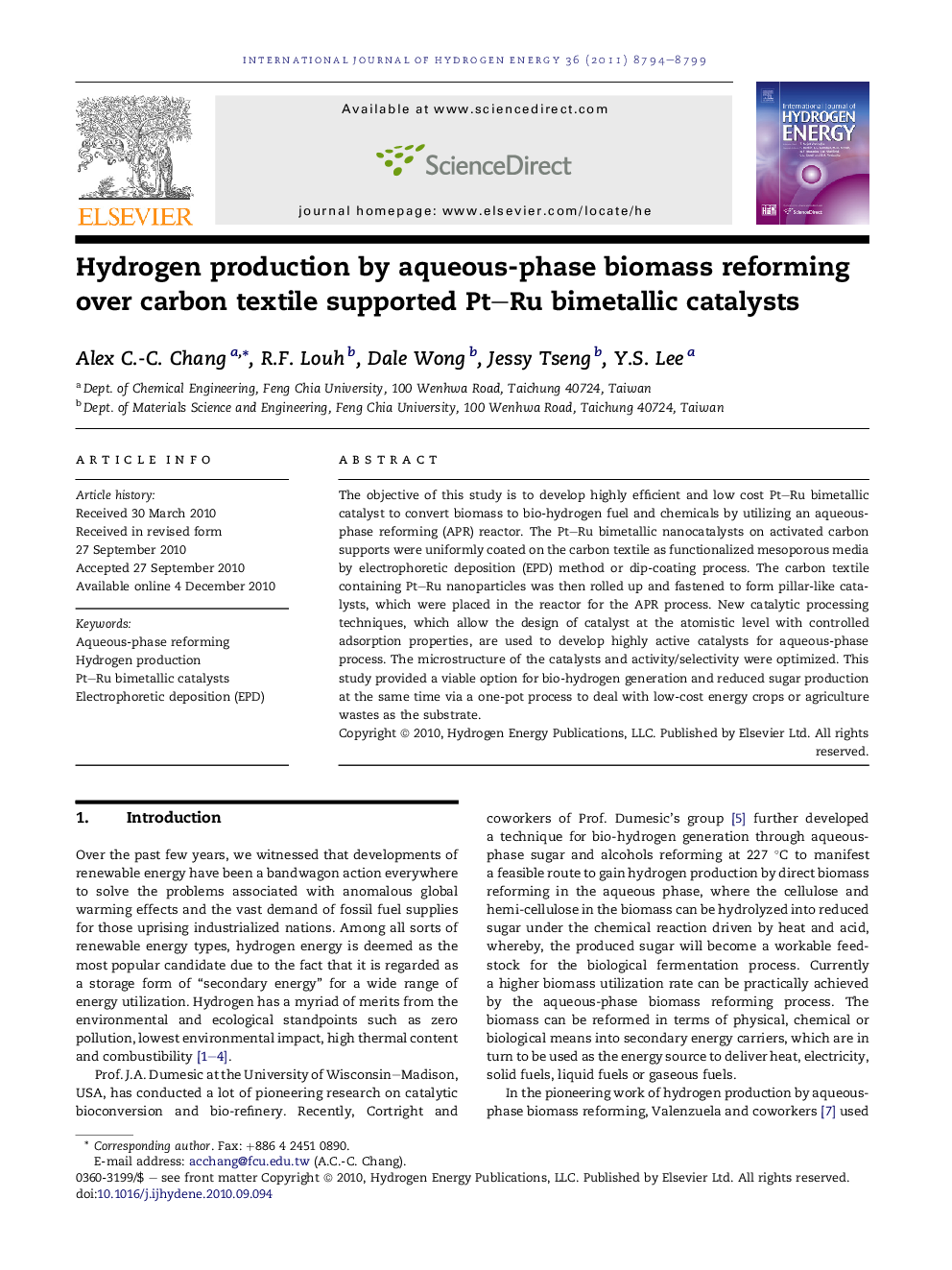| Article ID | Journal | Published Year | Pages | File Type |
|---|---|---|---|---|
| 1279202 | International Journal of Hydrogen Energy | 2011 | 6 Pages |
The objective of this study is to develop highly efficient and low cost Pt–Ru bimetallic catalyst to convert biomass to bio-hydrogen fuel and chemicals by utilizing an aqueous-phase reforming (APR) reactor. The Pt–Ru bimetallic nanocatalysts on activated carbon supports were uniformly coated on the carbon textile as functionalized mesoporous media by electrophoretic deposition (EPD) method or dip-coating process. The carbon textile containing Pt–Ru nanoparticles was then rolled up and fastened to form pillar-like catalysts, which were placed in the reactor for the APR process. New catalytic processing techniques, which allow the design of catalyst at the atomistic level with controlled adsorption properties, are used to develop highly active catalysts for aqueous-phase process. The microstructure of the catalysts and activity/selectivity were optimized. This study provided a viable option for bio-hydrogen generation and reduced sugar production at the same time via a one-pot process to deal with low-cost energy crops or agriculture wastes as the substrate.
